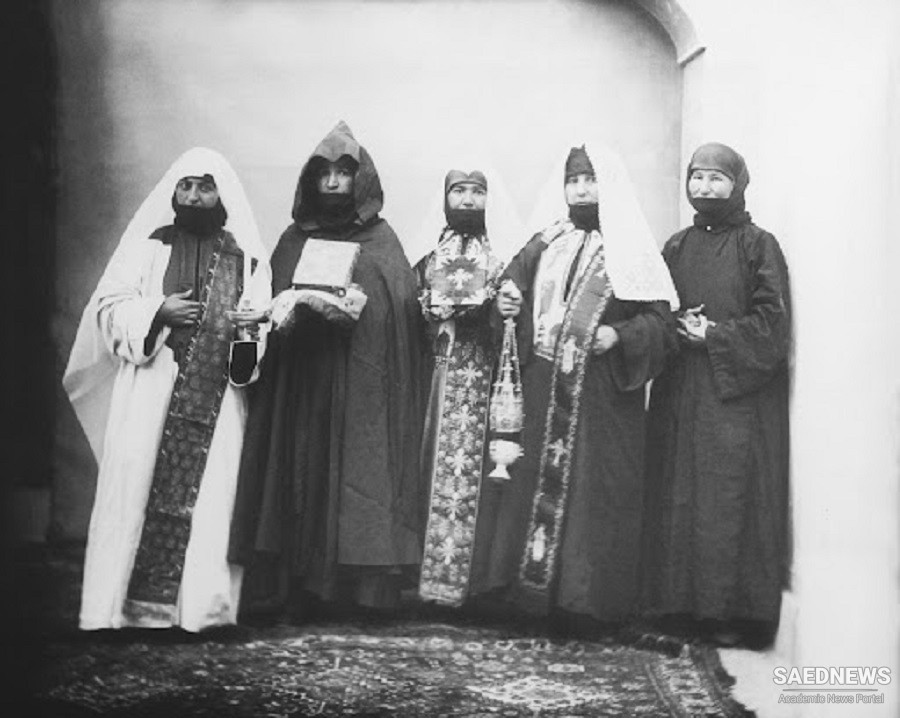The Armenians dominated the economy of Iran at a time when world trade was flourishing and competition with European traders was intense. This factor exacerbated the relations between the Iranian Armenians and their European ‘co-religionists’ whose economic interests diverged. As we saw, the Armenians did not want the foreign trade companies to be accommodated in Iran, as this did not suit their interests. In 1618, Thomas Baker presented himself to the Safavid court as the ambassador of England. He wished to obtain commercial privileges and trading posts in the port of Gombroon (Bandar Abbas).
The Armenians opposed such a treaty as they would have lost their control over the silk trade. As they had overland access to Europe through the Ottoman Empire, the English vessels were not vital to them. More than a half century later in 1688 and 1693, the English made further attempts to obtain trade concessions in Iran. By this time, they had understood that they had to come to terms with the Armenians; however, their efforts were in vain. In 1708, Sultan Husayn refused to grant the French similar trade privileges to those granted to the Armenians. He told the French ambassador, Sieur Michel, that the Armenians were subject to his laws and his fiscal requirements, whereas he did not have the same authority over the French merchants. Nonetheless, the French did manage to obtain some concessions, which incited the Armenians to visit Shah Sultan Husayn in order to have them revoked. The Armenians’ antagonism towards the French merchants must have been all the stronger because a few decades earlier the latter had pressurized the French government to stop the Armenians’ commercial activities in France. Their commercial success had also embittered their relations with the Portuguese, who created many obstacles to their operations in Hormuz. The hostile attitude of the Portuguese towards them made the Armenians accuse them of not being Christians.
After Shah Abbas I, Shah Safi ended the royal monopoly of the silk supply. Henceforth the European companies had to deal with the Armenians for obtaining silk. Apart from the Dutch, the Europeans were not able to come to terms with them, as the Armenians preferred to transport their merchandise through Ottoman territories rather than use European vessels and lose their control over the silk trade. The merchants from the Catholic countries seem to have suffered the most from the Armenians’ domination of the Iranian silk trade, as the latter had persuaded Shah Abbas II to avoid deals with sovereigns of Catholic countries. Instead they obtained his support at the end of his reign for negotiating commercial treaties with the Tsar.
It is interesting, however, that while the Armenians occasionally accepted commercial alliances with the Baniyans (Indian tradesmen),they refused similar dealswith European merchants. Their lack of sympathy towards their fellow European ‘co-religionists’ may explain Raphaël du Mans’ comment that ‘the Armenians despite their nice clothes look vulgar like the rest of the Iranians.’ The denominational differences between the Armenians of Iran and the European merchants cannot be advanced as a reason for the commercial disagreements. Nonetheless, religious issues did embitter the relations between the Armenians, who belonged to the Apostolic Church, and the Catholic missionaries who wished to convert them. The Islamic laws in Iran forbade apostasy to Muslims, and the population of the Nestorians in Safavid Iran was insignificant. As a result most of the efforts of the Catholic missionaries were directed into converting the Armenians. In fact, the principal Catholic mission to Iran was launched in 1604, after the news of the Armenians’ deportation reached Europe. Arakel of Tabriz describes the Catholic priests as thieves who stole the relics of Armenian churches in order to deprive them of their holy character and lure the Armenians to their own churches.


 Armenians and Their Interaction with Europeans in Safavid Persia
Armenians and Their Interaction with Europeans in Safavid Persia














































